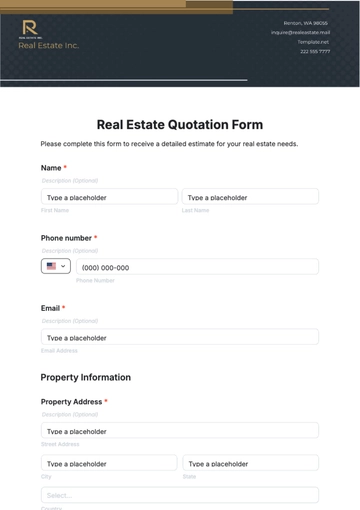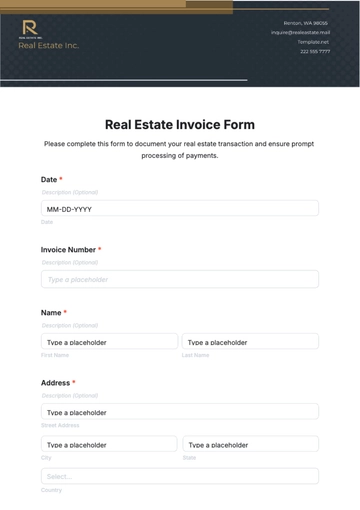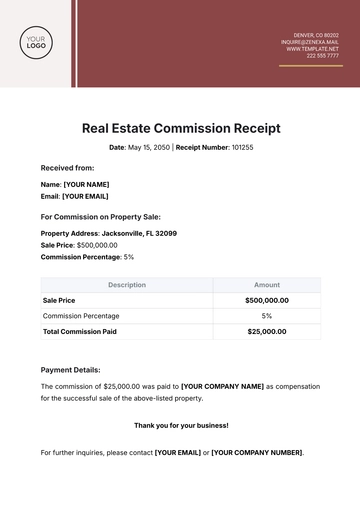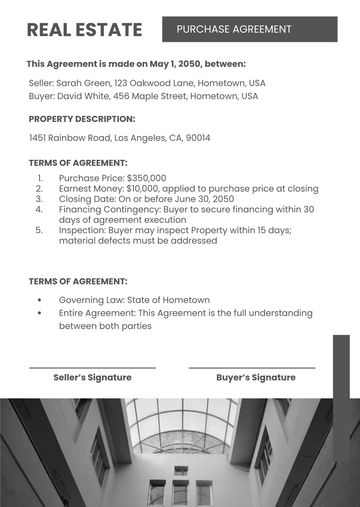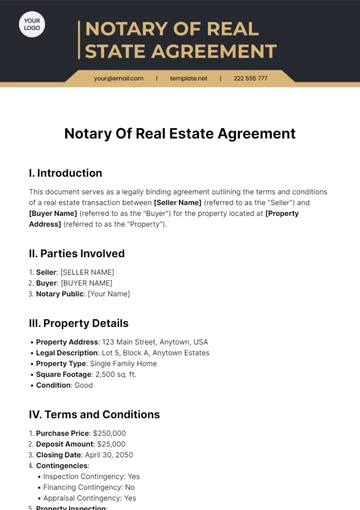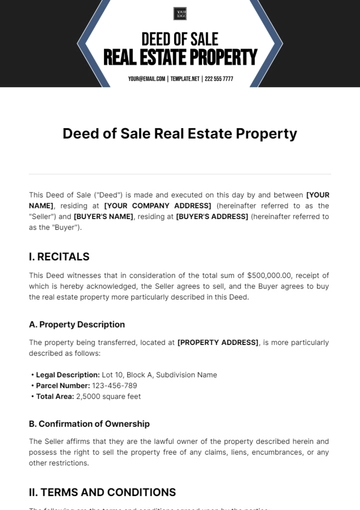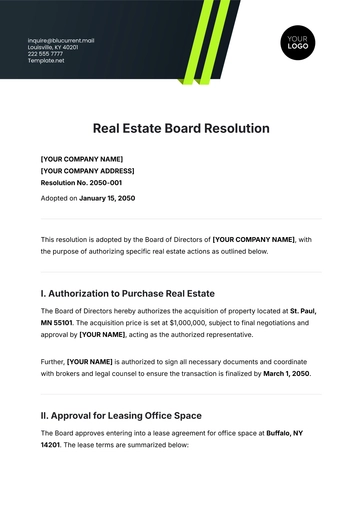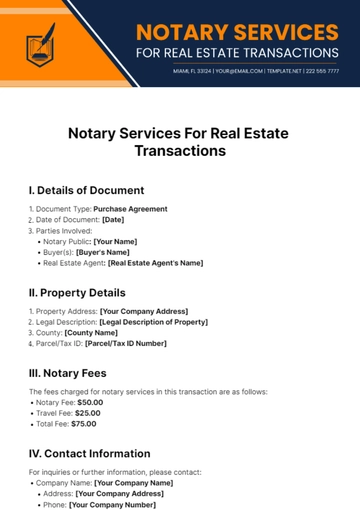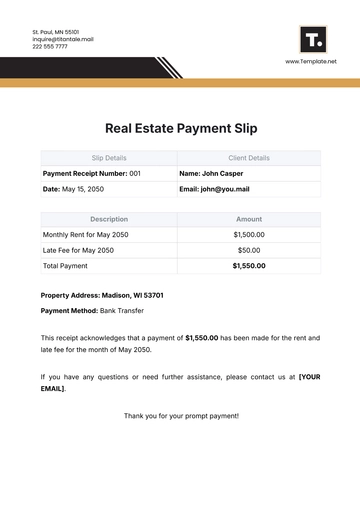Free Real Estate Tax Compliance Guide
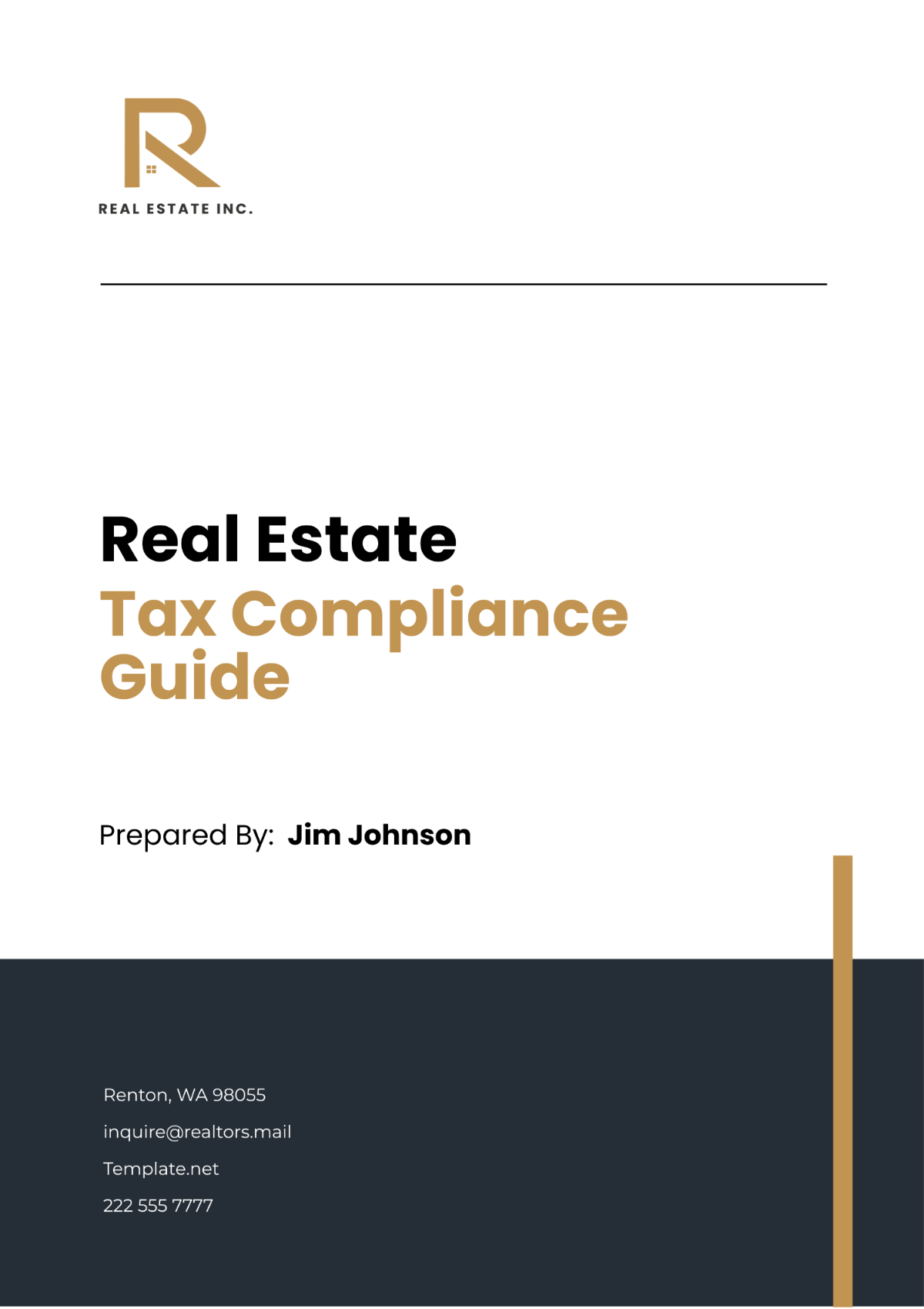
I. Introduction to Real Estate Taxes
Real estate taxes are a fundamental aspect of property ownership and investment. Understanding the intricacies of real estate taxation is essential for ensuring compliance with tax laws and maximizing financial returns from real estate assets. In this section, we provide an overview of real estate taxes and their significance in [Your Company Name]’s operations and processes.
A. Overview of Real Estate Taxes
Real estate taxes, also known as property taxes, are levied by government authorities on real property, including land, buildings, and improvements. These taxes contribute to funding various public services such as schools, roads, and emergency services.
B. Assessment and Calculation of Property Taxes
Property taxes are typically based on the assessed value of the property, which is determined by local tax assessors. Assessments may be conducted periodically or triggered by changes in property ownership or improvements. The tax rate, expressed as a percentage of the assessed value, varies depending on the jurisdiction and may be subject to caps or exemptions.
C. Importance of Compliance with Tax Regulations
Compliance with real estate tax regulations is crucial for avoiding penalties, interest, and legal consequences. Failure to pay property taxes can result in liens, foreclosures, and loss of ownership rights. By understanding and adhering to tax laws, property owners can protect their investments and contribute to the stability of their communities.
II. Understanding Property Taxes
Property taxes constitute a significant portion of the overall tax burden for real estate owners. This section delves into the key aspects of property taxes, including assessment methods, payment obligations, and avenues for appeal.
A. Property Tax Assessments
Local tax assessors determine the assessed value of properties based on factors such as market value, location, size, and condition. Property tax assessments may be conducted annually, biennially, or triennially, depending on local practices. Property tax assessments include:
Market Value Assessment: This method assesses the property's value based on its market worth. Assessors consider factors such as recent sales of comparable properties, location, size, condition, and amenities to determine the property's market value.
Cost Approach: This approach estimates the property's value by calculating the cost to replace it with a similar property, minus depreciation. It considers the cost of land and the cost of construction or replacement, adjusted for depreciation based on the property's age and condition.
Income Approach: This approach is commonly used for income-generating properties such as rental properties or commercial buildings. It estimates the property's value based on its potential income stream. Assessors analyze the property's rental income, operating expenses, vacancy rates, and capitalization rates to determine its value.
Assessed Value: The assessed value is the value assigned to the property for tax purposes by the local tax assessor. It may be based on one or a combination of the above assessment methods. The assessed value is typically a percentage of the property's market value or appraised value.
Reappraisal Assessment: Reappraisal assessments involve periodic reassessment of properties to reflect changes in market conditions, property values, or improvements. Reappraisals ensure that property tax assessments remain fair and equitable over time.
Exemption Assessment: Some properties may qualify for tax exemptions based on their use, ownership, or characteristics. Exempt properties are not subject to property taxes or may receive reduced tax assessments. Common types of property tax exemptions include homestead exemptions for primary residences, exemptions for charitable or nonprofit organizations, and exemptions for government-owned properties.
Special Assessments: Special assessments are additional taxes imposed on properties to fund specific public improvements or services that directly benefit the properties. Examples include assessments for road repairs, sidewalk construction, street lighting, and sewer systems. Special assessments are typically levied based on the property's proximity to the improvement or the benefit it receives from the service.
B. Factors Affecting Property Tax Rates
Factors affecting property tax rates vary depending on the jurisdiction and local tax policies. Here are some common factors that can influence property tax rates:
Property Value: The assessed value of the property is a primary determinant of property tax rates. Higher-valued properties generally incur higher tax liabilities compared to lower-valued properties.
Taxing Authority Budgets: Property tax rates are often determined by the budgetary needs of local taxing authorities, such as municipalities, counties, school districts, and special districts. Tax rates may be adjusted to generate sufficient revenue to fund public services and infrastructure projects.
Local Government Policies: Local government policies, including tax rate caps, revenue limitations, and assessment practices, can impact property tax rates. Taxing authorities may impose restrictions on tax rate increases or adopt policies to promote tax fairness and transparency.
School Funding Requirements: Property taxes are a significant source of funding for public schools in many jurisdictions. School district budgets and funding needs can influence property tax rates, especially in areas where education funding relies heavily on property tax revenue.
State Tax Laws: State tax laws and regulations can influence property tax rates indirectly by imposing limitations, requirements, or incentives for local taxing authorities. States may establish guidelines for property assessments, tax rate caps, or exemptions that affect local property tax rates.
Local Economic Conditions: Economic factors such as property market trends, employment rates, and economic development initiatives can impact property values and, consequently, property tax rates. Stronger economies may result in higher property values and tax revenues, potentially leading to lower tax rates or increased public spending.
Property Tax Base: The size and composition of the property tax base, including the number and types of taxable properties within a jurisdiction, can affect property tax rates. A broad and diverse tax base may enable taxing authorities to distribute tax burdens more equitably and stabilize tax rates.
Tax Relief Programs: Tax relief programs, such as homestead exemptions, senior citizen exemptions, or property tax freezes, can reduce property tax liabilities for eligible property owners. These programs may be implemented to provide financial assistance to vulnerable populations or incentivize certain behaviors, impacting overall tax rates.
Assessment Practices: Property assessment practices, including valuation methods, assessment frequency, and assessment accuracy, can influence property tax rates. Fair and consistent assessment practices help ensure that tax burdens are distributed fairly among property owners.
Public Policy Goals: Tax policy goals, such as promoting homeownership, stimulating economic development, or addressing income inequality, may influence property tax rates. Tax incentives or adjustments may be implemented to achieve specific policy objectives while balancing revenue needs.
C. Payment Methods
Property tax payment methods vary depending on the jurisdiction.
Annual Installments
Semi-Annual Payments
Quarterly Payments
Lump Sum Payments
Online Payment
Mail-In Payments
In-Person Payments
Electronic Funds Transfer (EFT)
Mobile Payment Apps
Payment by Phone
D. Appeals Process for Property Tax Assessments
Property owners who believe their assessments are inaccurate or unfairly high have the right to appeal to local tax authorities. The appeals process typically involves the following:
Review Notice: Check the assessment notice for accuracy.
Understand Grounds: Know valid reasons for appeal (e.g., valuation errors).
Gather Evidence: Collect supporting documents (appraisals, photos, etc.).
Submit Appeal Form: Fill out and submit the appeal form before the deadline.
Attend Hearing: Present your case if required at a formal hearing.
Receive Decision: Await the decision communicated in writing.
Accept or Further Appeal: Accept the decision or consider further appeals.
Comply: Follow through with the outcome, paying adjusted taxes if necessary.
III. Income Tax Implications of Real Estate Ownership
In addition to property taxes, real estate owners must navigate income tax considerations related to rental income, capital gains, and deductions. This section explores the income tax implications of real estate ownership and investment.
A. Taxation of Rental Income
Income generated from renting out real estate properties is subject to federal and state income taxes. Rental income must be reported on the owner's tax return, and expenses related to rental activities may be deductible, subject to certain limitations.
B. Deductions and Exemptions for Real Estate Investors
Real estate investors may be eligible for various deductions and exemptions that can reduce their taxable income and overall tax liability. Common deductions include mortgage interest, property taxes, insurance premiums, maintenance expenses, and depreciation. Investors should consult with tax professionals to maximize available deductions while ensuring compliance with tax laws.
C. Treatment of Capital Gains on Real Estate Sales
Profit realized from the sale of real estate properties is generally considered taxable capital gains. The tax treatment of capital gains depends on factors such as the holding period, the owner's tax filing status, and any applicable exclusions or deferrals. Understanding the rules governing capital gains can help real estate sellers optimize their tax outcomes and plan for future transactions.
IV. Depreciation Rules for Real Estate
Depreciation is a key concept in real estate taxation, allowing property owners to deduct the cost of their investment over time. Understanding depreciation rules is essential for optimizing tax benefits and accurately reporting income and expenses.
A. Explanation of Depreciation
Depreciation is the process of allocating the cost of a tangible asset over its useful life. In real estate, buildings and improvements are typically depreciated over a predetermined period using specified methods approved by tax authorities. Depreciation represents the wear and tear, deterioration, or obsolescence of the property over time.
B. Methods of Calculating Depreciation
Property owners should select the most advantageous method based on their specific circumstances and tax objectives. The methods used to calculate depreciation for real estate assets are as follows.
Straight-Line Method: This method evenly spreads the depreciation expense over the useful life of the asset. The formula for straight-line depreciation is (Cost of Asset - Salvage Value) / Useful Life.
Declining Balance Method: Also known as the reducing balance method, it applies a constant depreciation rate to the asset's book value each period. The depreciation expense declines over time as the book value decreases. Common declining balance rates include double declining balance (200% of the straight-line rate) and 150% declining balance.
Units of Production Method: This method calculates depreciation based on the asset's usage or output. It divides the depreciable cost of the asset by the total expected units of production over its useful life to determine the depreciation expense per unit. The depreciation expense is then multiplied by the actual units produced during the period.
Sum-of-the-Years'-Digits Method: This method accelerates depreciation by applying a declining fraction to the asset's depreciable cost. The fractions are derived from the sum of the digits representing the asset's useful life. The formula for calculating depreciation under this method is (Remaining Useful Life / Sum of the Years' Digits) * (Cost of Asset - Salvage Value).
MACRS (Modified Accelerated Cost Recovery System): MACRS is a depreciation method commonly used for tax purposes in the United States. It assigns assets to specific recovery periods and applies predetermined depreciation rates to calculate depreciation deductions. MACRS includes methods such as the General Depreciation System (GDS) and the Alternative Depreciation System (ADS), each with different recovery periods and depreciation rates.
C. Depreciation Schedules for Different Types of Real Estate Assets
Real estate assets are subject to different depreciation schedules depending on their classification and recovery period assigned by tax authorities.
Residential Rental Properties: Depreciated over 27.5 years using the straight-line method.
Commercial Buildings: Depreciated over 39 years using the straight-line method.
Land Improvements: Depreciated over 15 years under MACRS.
Appliances and Fixtures: Depreciated over 5 to 7 years under MACRS.
Leasehold Improvements: Depreciated over 5 to 15 years, depending on the nature of improvements.
Vacation Rental Properties: Depreciated over 27.5 years under MACRS.
Historic Buildings: Depreciation can be accelerated over a 20-year recovery period for qualified rehabilitation expenditures.
Mixed-Use Properties: Depreciation may require allocation based on the proportionate value of each component, with different methods or recovery periods applied accordingly.
V. Tax Credits and Incentives for Real Estate Investments
Governments often provide tax credits and incentives to encourage investment in certain types of real estate projects or activities that promote economic development, sustainability, or affordable housing. This section explores various tax credits and incentives available to real estate investors.
A. Overview of Tax Credits
Tax credits are dollar-for-dollar reductions in tax liability, providing a direct financial benefit to taxpayers who meet specified criteria. Common types of tax credits for real estate investments include historic rehabilitation tax credits, low-income housing tax credits, renewable energy tax credits, and new markets tax credits.
B. Incentives for Green and Energy-Efficient Projects
Governments offer incentives for real estate projects that incorporate green building practices, energy-efficient technologies, and sustainable design principles. These incentives may include:
Tax deductions for energy-efficient upgrades
Renewable energy tax credits
Grants for green building initiatives
Rebates for energy-efficient appliances and equipment
Expedited permitting processes for green projects
Low-interest loans for eco-friendly renovations
Property tax incentives for LEED-certified buildings
Net metering programs for renewable energy systems
Federal and state subsidies for solar panel installations
Funding for energy audits and efficiency improvements
VI. Tax Planning Strategies for Real Estate Owners
Tax planning is a proactive approach to managing tax liabilities and optimizing financial outcomes. Real estate owners can employ various strategies to minimize taxes while maximizing returns on their investments. This section explores effective tax planning strategies tailored to the unique characteristics of real estate assets.
A. Minimizing Tax Liabilities
Real estate owners can minimize tax liabilities through strategic planning techniques such as income deferral, expense acceleration, and income shifting. By timing income and expenses strategically, property owners can smooth out their tax obligations over time and potentially reduce their overall tax burden.
B. Structuring Real Estate Transactions
The structure of real estate transactions can have significant tax implications. Property owners should consider factors such as entity selection, ownership structure, and financing arrangements when structuring real estate deals. Choosing the right legal and tax structures can optimize tax efficiency, asset protection, and operational flexibility.
C. Utilizing Tax-Advantaged Accounts
Real estate owners may benefit from utilizing tax-advantaged accounts such as Individual Retirement Accounts (IRAs), Health Savings Accounts (HSAs), or 1031 exchanges (like-kind exchanges) for deferring or minimizing taxes on real estate transactions. These accounts offer opportunities for tax deferral, exemption, or exclusion, depending on the specific rules and limitations applicable to each account type.
VII. Compliance and Reporting Requirements
Compliance with tax regulations is a fundamental obligation for real estate owners and investors. This section outlines the key compliance and reporting requirements related to real estate taxation, including filing deadlines, reporting obligations, and potential penalties for non-compliance.
A. Tax Filing Requirements
Real estate owners must comply with federal, state, and local tax filing requirements, which may include annual income tax returns, property tax declarations, and informational filings for certain transactions. Failure to meet filing deadlines or accurately report income and expenses can result in penalties, interest, and legal consequences.
B. Reporting Obligations
Real estate owners are responsible for accurately reporting income, deductions, and other relevant information on their tax returns. This may include reporting rental income, capital gains from property sales, depreciation deductions, and other tax-related transactions. Timely and accurate reporting ensures compliance with tax laws and facilitates efficient tax administration.
C. Penalties for Non-Compliance
Failure to comply with real estate tax regulations can lead to various penalties, including fines, interest charges, and even criminal prosecution in severe cases of tax evasion or fraud. Property owners should familiarize themselves with applicable tax laws and regulations to avoid inadvertent non-compliance and mitigate potential penalties.
III. Conclusion
With this comprehensive Real Estate Tax Compliance Guide, [Your Company Name] aims to empower real estate owners and investors with the knowledge and resources needed to navigate the complexities of real estate taxation and achieve their financial goals effectively. For personalized tax advice and assistance tailored to your specific circumstances, we recommend consulting with qualified tax professionals and legal advisors.
- 100% Customizable, free editor
- Access 1 Million+ Templates, photo’s & graphics
- Download or share as a template
- Click and replace photos, graphics, text, backgrounds
- Resize, crop, AI write & more
- Access advanced editor
Ensure compliance with tax regulations in real estate with Template.net's Real Estate Tax Compliance Guide Template. Easily editable in our AI Editor Tool, this customizable template offers comprehensive guidance on navigating tax obligations, deductions, and reporting requirements. Streamline compliance efforts, mitigate risks, and uphold financial integrity effortlessly with Template.net!

